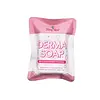What's inside
What's inside
 Key Ingredients
Key Ingredients

 Benefits
Benefits

 Concerns
Concerns

 Ingredients Side-by-side
Ingredients Side-by-side

Water
Skin ConditioningGlycerin
HumectantCocamidopropyl Betaine
CleansingPropanediol
SolventSodium Lauroyl Methyl Isethionate
CleansingXylitylglucoside
HumectantAnhydroxylitol
HumectantXylitol
HumectantPEG-150 Pentaerythrityl Tetrastearate
EmulsifyingPEG-120 Methyl Glucose Dioleate
EmulsifyingSalicylic Acid
MaskingBetaine
HumectantAvena Sativa Kernel Extract
AbrasivePentylene Glycol
Skin ConditioningCapryloyl Salicylic Acid
ExfoliatingPanthenol
Skin ConditioningAllantoin
Skin ConditioningZinc PCA
HumectantSodium PCA
HumectantCoco-Glucoside
CleansingGlyceryl Oleate
EmollientPhenoxyethanol
PreservativeEthylhexylglycerin
Skin ConditioningTrisodium Ethylenediamine Disuccinate
Lactic Acid
BufferingCitric Acid
BufferingSodium Citrate
BufferingSodium Hydroxide
BufferingWater, Glycerin, Cocamidopropyl Betaine, Propanediol, Sodium Lauroyl Methyl Isethionate, Xylitylglucoside, Anhydroxylitol, Xylitol, PEG-150 Pentaerythrityl Tetrastearate, PEG-120 Methyl Glucose Dioleate, Salicylic Acid, Betaine, Avena Sativa Kernel Extract, Pentylene Glycol, Capryloyl Salicylic Acid, Panthenol, Allantoin, Zinc PCA, Sodium PCA, Coco-Glucoside, Glyceryl Oleate, Phenoxyethanol, Ethylhexylglycerin, Trisodium Ethylenediamine Disuccinate, Lactic Acid, Citric Acid, Sodium Citrate, Sodium Hydroxide
Alternatives
Ingredients Explained
These ingredients are found in both products.
Ingredients higher up in an ingredient list are typically present in a larger amount.
Salicylic Acid (also known as beta hydroxy acid or BHA) is a well-known ingredient for treating skin that struggles with acne and clogged pores. It exfoliates both the skin's surface and deep within the pores to help clear out buildup, control oil, and reduce inflammation.
Unlike AHAs (alpha hydroxy acids), salicylic acid is oil-soluble. This allows it to penetrate into pores which makes it especially effective for treating blackheads and preventing future breakouts.
Salicylic acid is also known for its soothing properties. It has a similar structure to aspirin and can calm inflamed or irritated skin, making it a good option for acne-prone skin that is also sensitive.
Concentrations of 0.5-2% are recognized by the U.S. FDA as an over-the-counter topical acne product.
It can cause irritation and/or dryness if one's skin already has a compromised moisture barrier, so it's best to focus on repairing that before introducing this ingredient into your routine.
While salicylic acid does not increase sun sensitivity, it’s still important to wear sunscreen daily to protect your skin.
If you are looking for the ingredient called BHA or Butylated Hydroxyanisole, click here.
Learn more about Salicylic Acid